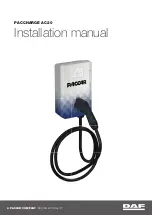
If you change or replace a wheel, make sure that the wheel’s specifications
match those of the original wheels. Only use TPMS-specified wheels
approved for your vehicle.
Installing improper tires on your vehicle can affect handling and stability.
This can cause a crash in which you can be seriously hurt or killed.
Always use the size and type of tires recommended in the Owner’s
Manual.
n
Tire Service Life
The life of your tires is dependent on many factors, including driving habits,
road conditions, vehicle loading, inflation pressure, maintenance history,
speed, and environmental conditions (even when the tires are not in use).
In addition to regular inspections and inflation pressure maintenance, it is
recommended that you have annual inspections performed once the tires
reach five years old. All tires, including the spare, should be removed from
service after 10 years from the date of manufacture, regardless of their
condition or state of wear.
n
Winter Tires
If driving on snowy or frozen roads, mount all season tires marked “M+S”,
snow tires, or tire chains; reduce speed and maintain sufficient distance
between vehicles when driving. For winter tires, select the size and load
ranges that are the same as the original tires, and mount them to all four
wheels.
n
Tire Chains
Install tire chains on the front tires only. Because your vehicle has limited
tire clearance, we strongly recommend using the following chains:
Models with 215/55 R16 tires:
Cable type: SCC Radial chain SC1032
Models with 215/50 R17 tires:
Cable type: SCC Radial chain SC1032
Models with 235/40 R18 tires and without SPORT mode:
Cable type: SCC Radial chain SC1034
Models with 235/40 R18 tires and with SPORT mode:
Not recommended to use any type of chains
MAINTENANCE
136 |
Mount chains as tightly as you can and make sure that they do not touch the
brake lines or suspension.
Traction devices that are the wrong size or improperly installed can damage
your vehicle’s brake lines, suspension, body, and wheels. Stop driving if they
are hitting any part of the vehicle.
Using the wrong chains, or not properly installing chains, can damage the
brake lines and cause a crash in which you can be seriously injured or
killed.
Follow all instructions in this guide regarding the selection and use of tire
chains.
Tire Labeling
The tires that came on your vehicle have a number of markings. Those you
should be aware of are described below.
Here is an example of what each marking means:
P205/55 R16 89H
• P: tire type (passenger vehicle)
• 205: tire width in millimeters
• 55: aspect ratio (tire section height as a
percentage of its width)
• R: tire construction code (radial)
• 16: rim diameter in inches
• 89: load index (code indicating maximum
load tire can carry)
• H: speed symbol (code indicating maximum speed rating)
n
Tire Identification Number (TIN)
The tire identification number (TIN) is a
group of numbers and letters that look
like the following example. The TIN is
located on the sidewall of the tire.
MAINTENANCE
| 137









































